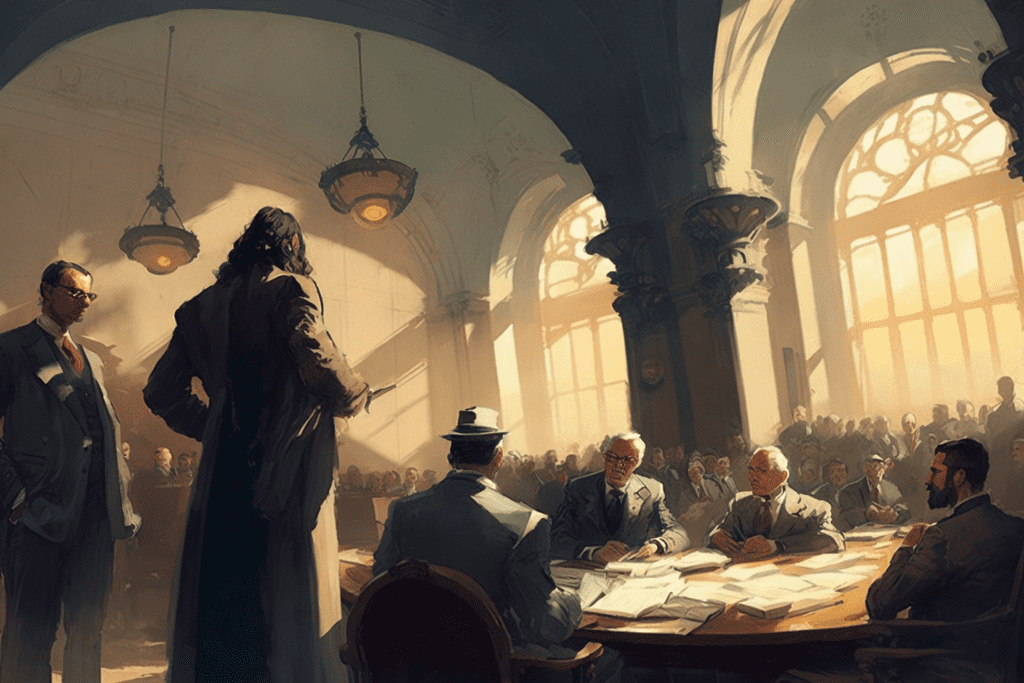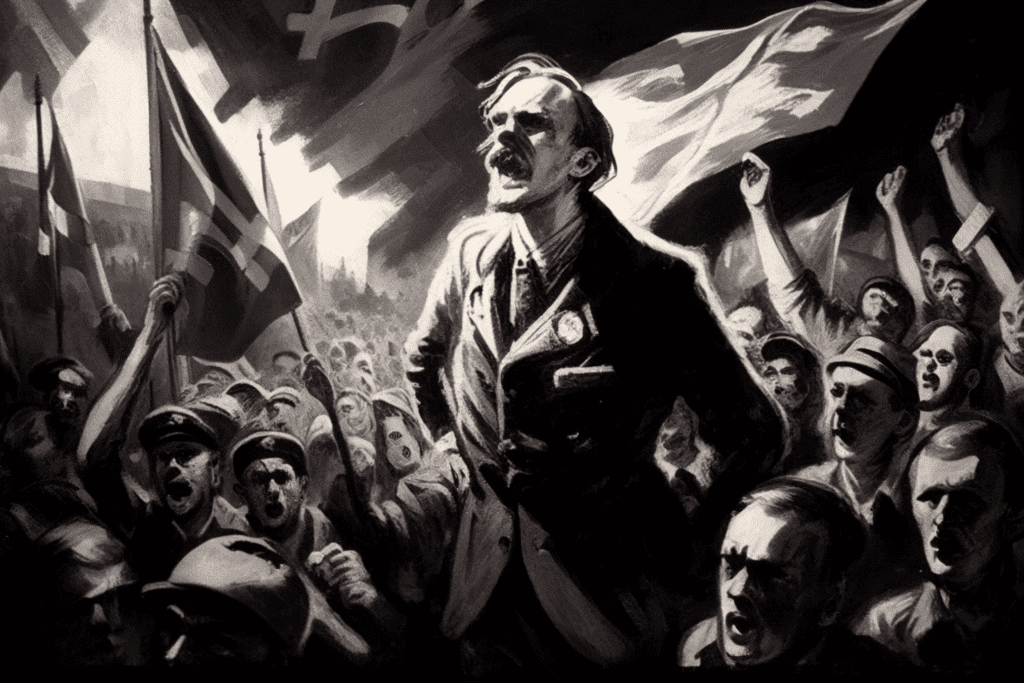
Aftermath
After World War I, the global economy was marked by unprecedented devastation, particularly in Europe, where countries were left in ruins, and poverty was widespread. Currencies were significantly devalued, and the Allied forces borrowed a significant amount of money from the US. Normally, during times of war, debts incurred among allies were forgiven. However, during this period, the US not only demanded that the debt be repaid but also imposed trade policies that made it harder for Allied countries like the UK and France to repay their debts. Germany, as the loser of the war, bore the brunt of these financial burdens.1
Treaty of Versailles

The Treaty of Versailles, specifically Article 231, established the legal foundation for reparations. This article, also known as the War Guilt Clause, held Germany accountable for all the loss and damage suffered by the Allied nations during World War I.2,3
The Treaty of Versailles, signed at the end of World War I, required Germany to pay reparations to the Allied powers. It required Germany to pay 132 billion gold marks in reparations to the Allied powers. This was a staggering sum of money, equivalent to around $442 billion in today’s currency.2
The reparations were intended to compensate the Allies for the damages they had suffered during the war. However, many Germans saw the reparations as unjust and crippling. The burden of paying reparations fell on the German people, and it contributed to the economic instability that plagued the Weimar Republic.2
The extent of such a payment is difficult to imagine. These reparations had been cancelled and reinstated throughout history. After several downgrades and cancelling of interest, Germany made its final payment on this debt on the 3rd of October 2010, almost 92 years after the treaty was signed.4
The Genoa Economic And Financial Conference

In 1922, the Europeans held a financial conference in Genoa Italy to rebuild their devastated economies. Here they loosely agreed to a gold exchange standard. It was agreed that they would be able to save in each other’s national currencies but could be exchanged for gold at a fixed rate. Here came another added layer of trust whereby governments had to trust the other governments to uphold such an agreement.1
For example. If Italy held French Francs and British Pounds, the French government would have to exchange those Francs for a fixed exchange of gold and likewise for the Brits and the pound. In this scenario, if France did not adhere to this, Italy would have lost the gold owed to them from France but would still get the gold from the British for their pounds.
The risk was somewhat spread amongst the countries involved but it was the first time there was an added layer of credit risk on an international level. This laid the groundwork for the Bretton Woods System we’ll discuss in the next article.1
Hyperinflation and the weimar Republic

The Weimar Republic was a short-lived German government that existed post-WWI from 1919 to 1933. The reparations imposed on Germany had a significant impact. It was a young and fragile government, and the burden of paying such reparations exacerbated its economic and political problems.5
Germany, having been environmentally, politically and economically crippled, struggled to raise the funds necessary to pay the reparations. As predictable as the sunrise, the government resorted to printing money to make up for the losses. This led to hyperinflation and the devaluation of the German currency. It got to the point where the supply of money was so high that the value of the paper currency dropped to its utility value i.e. that of paper. People began using it for tinder for fires and made children’s toys out of it.6
The Rise of Populism

Germany paid with land, commodities and money. Despite using a substantial portion of German wealth to pay reparations, this was still not enough. On top of that, hyperinflation caused severe economic hardship for the German people and contributed to political unrest.5
It had been 14 years since WWI. During this time, a new generation of Germans had grown up in a world where their wealth was taken from them for a war they never participated in. Anger grew gradually, then suddenly, while a feeling of unjust punishment propagated through the country.5
The resulting instability in Germany gave rise to populism, which ultimately led to the ascension of Adolf Hitler. Hitler, once in power, refused to pay further reparations. The German people, after being economically starved for so long, were finally given hope by their new leader.5 The old saying “never meet your heroes” was never truer for the Jewish population of Germany. Hitler went on to take advantage of this newfound power to action his own motives. The rest, as they say, was history.
Importance of Historical Context
The causes of WWII are many, however, it is important to remember that the roots stem from the past. This is also the reason it is important to understand how we got to the economic situation we’re in today to hopefully prevent it from ever occurring again. In the next article, we’ll discuss how the US dollar became the Global Reserve Currency.
References
- Gladstein, A. The Hidden Costs of the Petrodollar. Bitcoin Magazine. Available at: https://bitcoinmagazine.com/culture/the-hidden-costs-of-the-petrodollar
- The Treaty of Versailles. Wikipedia. Available at: https://en.wikipedia.org/wiki/Treaty_of_Versailles
- Article 231 of the Treaty of Versailles. Wikipedia. Available at: https://en.wikipedia.org/wiki/Treaty_of_Versailles
- TIME Magazine. (2010, November 11). The Treaty of Versailles: A Concise History. Available at: https://content.time.com/time/world/article/0,8599,2023140,00.html.
- Wikipedia. Weimar Republic. Available at: https://en.wikipedia.org/wiki/Weimar_Republic
- Hyperinflation in the Weimar Republic: Photographs. Rare Historical Photos. Available at: rarehistoricalphotos.com/hyperinflation-weimar-republic-1922/.
These articles were designed to make these concepts more palatable. If you’re interested in reading a more in-depth perspective on the transition to fiat currency, consider the following:
ENDEVR. “End of the Road: How Money Became Worthless.” Youtube documentary, https://www.youtube.com/watch?v=NJd6RKsY5H4
Saifedean Ammous, “The Bitcoin Standard: A Decentralised Alternative to Central Banking”. Wiley, 2018
Saifedean Ammous, “The Fiat Standard: The Debt Slavey Alternative to Human Civilization”. Wiley, 2021
Investopedia. “How Petrodollars effect the US dollar.” https://www.investopedia.com/articles/forex/072915/how-petrodollars-affect-us-dollar.asp
Gladstein, Alex. “Uncovering the hidden costs of the Petrodollar.” Bitcoin Magazine, https://bitcoinmagazine.com/culture/the-hidden-costs-of-the-petrodollar

Ruki is a passionate Bitcoin educator who firmly believes in the principles of the Austrian School of Economics. As a sound money advocate he recognises its benefits to individuals and society as a whole. He is dedicated to empowering those without financial access to take control and build a more secure future.
